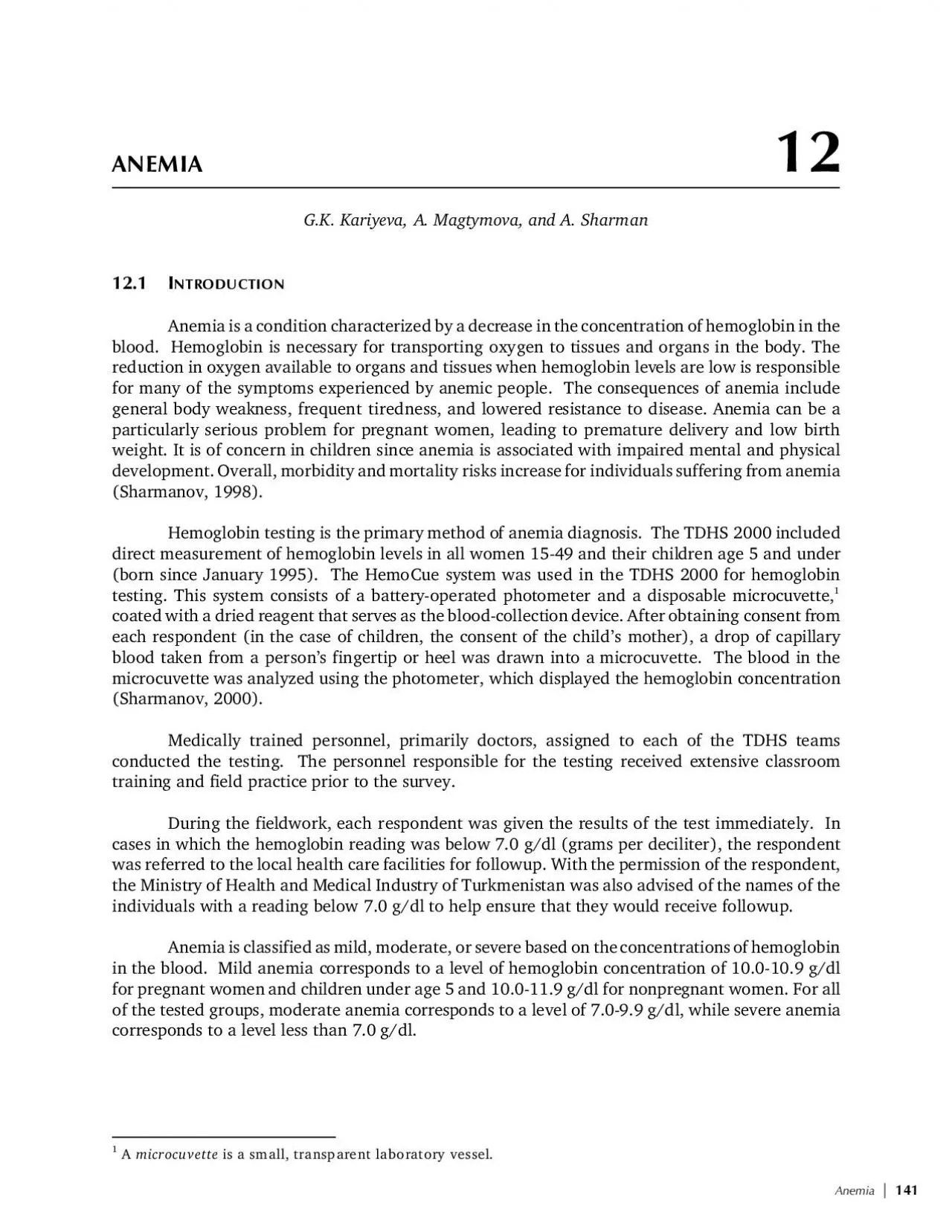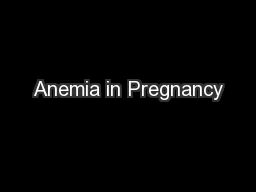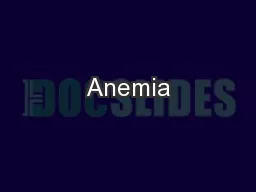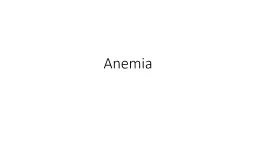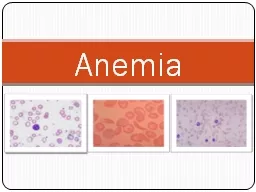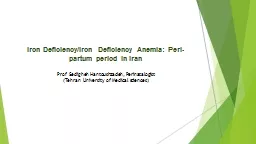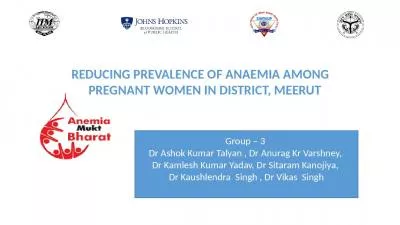PDF-Table 121 Anemia among women
Author : dorothy | Published Date : 2022-10-13
142 Anemia of women age 1549 classified as having anemia by background characteristics Turkmenistan 2000 Per
Presentation Embed Code
Download Presentation
Download Presentation The PPT/PDF document "Table 121 Anemia among women" is the property of its rightful owner. Permission is granted to download and print the materials on this website for personal, non-commercial use only, and to display it on your personal computer provided you do not modify the materials and that you retain all copyright notices contained in the materials. By downloading content from our website, you accept the terms of this agreement.
Table 121 Anemia among women: Transcript
Download Rules Of Document
"Table 121 Anemia among women"The content belongs to its owner. You may download and print it for personal use, without modification, and keep all copyright notices. By downloading, you agree to these terms.
Related Documents

